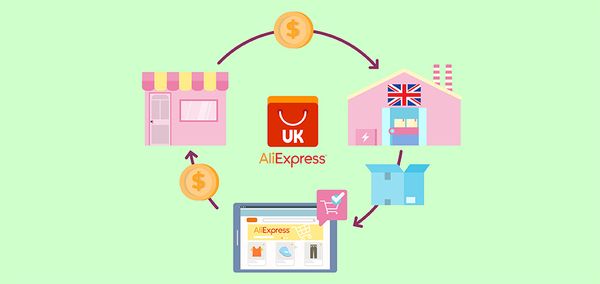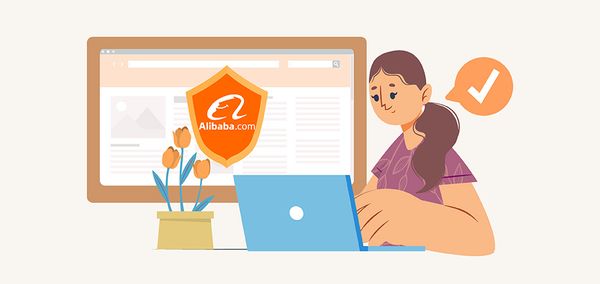What Are The Differences Between Purchase Orders (P.O) And Invoices?

Handling paperwork has never been an easy task. It calls for meticulousness and in-depth knowledge of the functions, purposes, and times for which each type of document is employed. This, of course, also holds true for the procurement world. Sometimes, not clearly understanding what function a document serves may cause unwanted bottlenecks and even expensive mistakes.
In today’s article, we would like to discuss the differences between two similar and at times confusing procurement terms: purchase order and invoice. Having a firm awareness of the differences between a purchase order vs invoice, you will also learn how to better handle cash flows and avoid any unwanted disputes and conflicts.
Before comparing the terms, we first need to recap what each of the terms means and what they are composed of, as well as any unique elements that you need to pay attention to.
What Is A Purchase Order
Definition
A purchase order, or PO is a legally binding document drafted by a buyer when placing an order with their suppliers. It is presented to the seller to confirm the buyer’s intention to buy a predetermined number of goods or services with the relevant details included.
After the PO is filled, it is sent to the seller. When a buyer places an order, it indicates that they are willing to pay a specified amount for a specific good or service. When the seller accepts the PO, it officially becomes a legally binding document.
Another thing to remember is that when the buyer receives their bill, a purchase order gives the seller insurance against non-payment.
There are four different forms of purchase orders used in business: Standard purchase order (PO), planned purchase order (PPO), blanket purchase order (BPO), and contract purchase orders (CPO).
Purchase Order Components
A typical purchase order consists of the following elements:
- Purchase order number, e.g. the purchase order from the example provided is 11000. Often, you can find the purchase order number at the top of the document.
- Dates: This may be the purchase date and the delivery date. E.g. the delivery date in the example is April 23rd, 2020.
- Seller information: name, contact information, and billing address
- Buyer information: name, contact information, and delivery address
- Order details: 1) List and description of items purchased. For example, the description of the item might include its size and name, “small part for FUJITSU Inverter”. 2) Quantity of items purchased 3) Price per unit 4) Total sum of the order 5) Shipping fees
- General terms and conditions
- Payment terms
- Tax information
- Other information like special instructions
- Signatures from relevant parties
What Is a Purchase Order Number
Typically made up of numbers and letters, a purchase order number (PO number) is a unique identification assigned to the purchase order. This unique identifier allows clarification during communication between the seller and the buyer regarding the order.
When put in relation to an invoice, purchase order numbers ensure the seller sends the correct items or delivers the right services as stated on the PO. The unique identifier also simplifies the process of matching the PO to the invoice, reducing any unnecessary back-and-forth to find a particular order.
| Get Started Now to Grow Your Online Business with the Best AliExpress Dropshipping Tool - DSers! |
Even though the unique PO identifier makes it easier to keep track of each individual order, manually handling POs is still error-prone. However, as your business grows and the volume of POs generated from email, telephone, and text messages increases, you will require the assistance of a digital tool to automate POs processing. Not only do they eliminate bottlenecks, and sometimes even financial penalties, but they also keep you ahead of the game in today’s digital age. Additionally, automated purchase order processing keeps your data centralized and frees up time for other essential business activities.
What Is An Invoice
Definition
An invoice is a document created by the seller that requests payment from the buyer. In some cases, it acts as a legally binding document if information like names of the vendor and client, price and service price description and payment terms are included.
There are different types of invoices, e.g. a debit note, a paper receipt, or a bill of sale.
Invoice Components
You can often find these common elements in invoices:
- Invoice number: The number can often be found on top of the invoice. In this example, the invoice number (100) is in the top right corner.
- Dates: The date that the item was sent/ delivered (optional), invoice date and payment due date. In some cases, only the invoice date may be present (as in the example shown).
- Description of the goods or services purchased: 1) The number of each purchased item or service. In the example below, you can find an invoice for a financial service. 2) Price per unit 3) The subtotal and currency 4) Date of purchase
- Seller information: name, contact information, and billing address
- Buyer information: name, contact information, and delivery address
- Discounts or credits (if any)
- Applicable taxes or fees (if any)
- Payment terms
- Other notes (if any)
What Is An Invoice Number
Similar to purchase orders, invoices are identified by a special number. Invoices are given this identity systematically.
Invoice numbers serve multiple purposes. They make sure the issued invoice is legal meaning without a unique code, it is not considered legitimate. The invoice numbers also serve as a formal record for tax, accounting, and income monitoring purposes for both the seller and the customer. It is helpful for managing past-due invoices and tracking payments.
Necessity of Both Purchase Order and Invoice
Purchase orders and invoices are crucial business documents. Businesses that have an invoice-only or purchase order-only approach experience are at risk of slower processing time, less visibility and even an increased likelihood of fraud.
Having both purchase orders and invoices is extremely beneficial for the procurement process. The following are some of the benefits.
- Information contained in the purchase order and invoices both play key roles in clearly stating the expectations regarding the purchased items or services.
- They play crucial roles in audit trails: Details on the invoice and purchase orders provide the auditors with evidence to make sure there are no financial discrepancies. The documents also provide an insight into how money is traveling in and out of the business.
- The two documents offer a well-organized list of expenses with supporting information that is helpful for record keeping.
Understanding the necessity of both purchase orders and invoices is just as important as efficiently managing them. The massive order quantity coming in from emails, phone calls, and messages can be extremely difficult to manually process. Not only is it inefficient, but the process is also error-prone and extremely time-consuming.
Having the right retail management system implemented, retailers no longer have to spend hours each day manually tracking or creating orders using paper-based systems. Gone are the days of overstocking or understocking, retail management systems provide you with 360-degree inventory information, so you always have your customer’s favorite items in stock. Moreover, the system automatically generates purchase orders and sends them to suppliers, which significantly reduces overhead tasks.
All in all, retail management systems allow you to make confident decisions, gain insight into your customer’s behavior to create personal experiences, and have time to focus on scaling up the business.
Purchase Order vs Invoice: What’s The Key Difference
As the purchase order and invoice are made of similar elements, they are easily confused with one another. Even seasoned staff get them mixed up from time to time.
If the two concepts are still unclear to you, the table with their key distinctions is provided below to aid in your understanding.
4 Similarities Between Purchase Order and Invoice
You have probably noticed the similarities in the purchase orders and invoice’s components. As a matter of fact, the invoice often has most if not all the details included in the purchase order, but with the additional information about payment terms and invoice number. However, are there any other similarities between the two documents?
- First, the purchase order and invoice are both commercial documents used to communicate a specific purchase.
- The two documents are crucial records in the financial accounting departments to keep track of the purchasing and sales, as well as taxes, accounting, budgeting, etc.
- They provide insight into the purchasing process as a whole.
- The documents help achieve optimal spending in a predetermined budget.
All in all, purchase orders and invoices hold a number of similarities. Nonetheless, as long as you keep in mind their main goal and functions, as well as the document’s sender and receiver, you will have little to no trouble telling them apart.
Last Note
Learning and trying to understand different kinds of commercial paperwork is undeniably difficult. However, once you’ve gotten a hang of it, you will no longer have to go through time-consuming and even expensive back-and-forth to fix mistakes caused due to confusion. You will also learn how to organize and handle the documents in a much more efficient manner.
Simply understanding the definitions and uses of each commercial document may still be difficult to manage documents if you do so manually.













 Company
Company
 Why Choose DSers
Why Choose DSers
 Blog
Blog
 Help Center
Help Center




 Live Chat
Live Chat